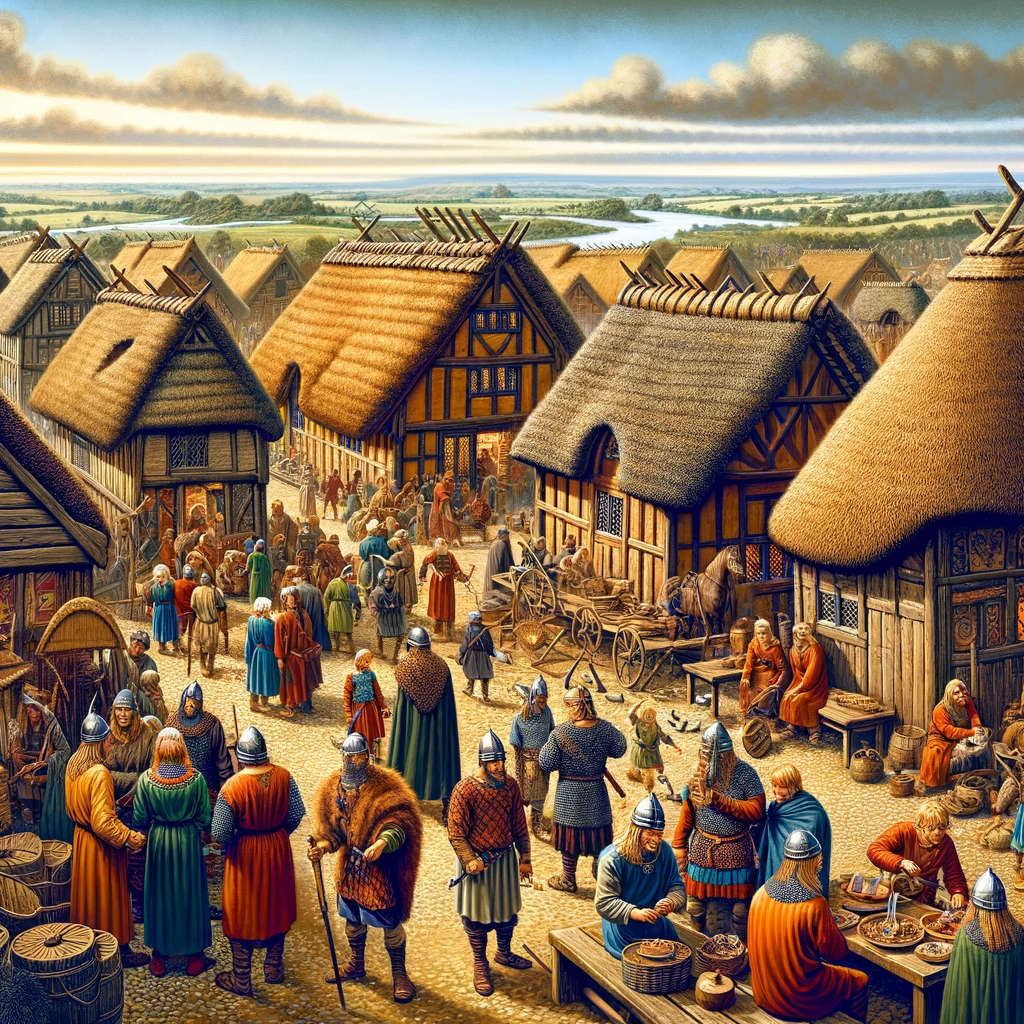Exploring the Viking Legacy: Leicester During the Viking Age
Leicester during the Viking Age
Leicester, a city steeped in history and culture, has a story that stretches back centuries. Nestled in the heart of England, this East Midlands gem has seen the rise and fall of kingdoms, the clash of cultures, and the emergence of a rich tapestry of traditions. Among the many chapters of Leicester’s history, one of the most captivating is its role during the Viking Age. In this article, we will explore the intriguing tale of Leicester and its interactions with the Vikings, Anglo-Saxons, and Lady Aethelflaed, a formidable figure in the saga of this ancient city.

Leicester: A Snapshot of the Viking Age
To truly understand Leicester during the Viking Age, we must first delve into the historical context. The Viking Age, which spanned from the late 8th century to the early 11th century, was characterized by Norse seafaring warriors, known as Vikings, who explored, traded, and often raided distant lands. This period witnessed significant changes in the political landscape of England.
Viking Leicester and the Danelaw
Leicester, located in the East Midlands, found itself at the crossroads of Viking and Anglo-Saxon influence. The region was part of the Danelaw, a territory in England where Danish laws and customs held sway. Leicester was among the five main towns of Danish Mercia, which also included Northampton, Stamford, Nottingham, and Derby. These towns played a crucial role in Viking rule.
Lady Aethelflaed: The Mercian Queen
At the heart of Leicester’s Viking history stands Lady Aethelflaed of Mercia, the daughter of King Alfred the Great. Following her brother Edward the Elder’s ascension to the throne, Aethelflaed took on the mantle of leading Mercia. Her reign was marked by her strategic prowess, as she established fortified settlements, known as burhs, to resist Viking incursions.
The Great Heathen Army
One of the pivotal moments in Leicester’s Viking history was the arrival of the Great Heathen Army in the early 9th century. Comprised of warriors from various Norse clans, this formidable force sought to conquer and carve out territories in England. Their presence significantly impacted Leicester and the surrounding regions.
Leicester’s Role in Viking Rule
Leicester served as a strategic outpost during the Viking Age, guarding the border of Mercia and Wessex. The city’s location along the River Trent made it a vital stronghold for both Viking and Anglo-Saxon interests. Battles and shifting allegiances were a common occurrence in this era.
Legacy and Unearthing Artefacts
Today, Leicester bears the marks of its Viking past. The Jewry Wall, a Roman monument that was still standing during the Viking Age, provides a tangible link to the city’s ancient history. Artefacts and place-names continue to offer glimpses into the customs and lifestyles of the time.
The Decline of Viking Influence
The Viking Age gradually gave way to the assimilation of Norse and Anglo-Saxon cultures. By the late 10th century, Leicester was no longer ruled as a Danish jarldom but was integrated into the English Mercian kingdom. The city remained a vital part of England, contributing to the ever-evolving landscape of the nation.
Conclusion
Leicester during the Viking Age is a captivating tale of power struggles, cultural exchange, and historical significance. The Vikings, Anglo-Saxons, and Lady Aethelflaed all played pivotal roles in shaping the city’s destiny. As we explore the remnants of this bygone era, Leicester’s rich history continues to be a source of fascination and pride for its residents and enthusiasts alike.




